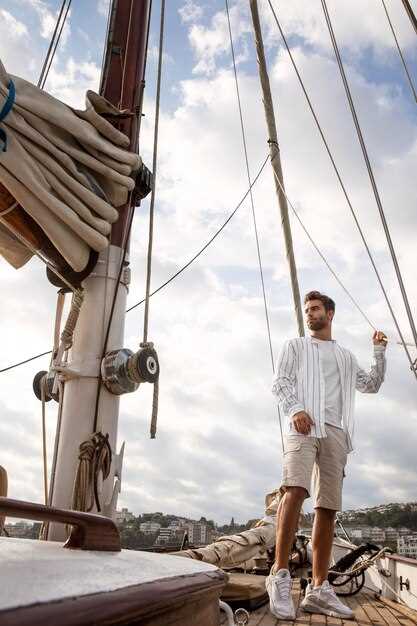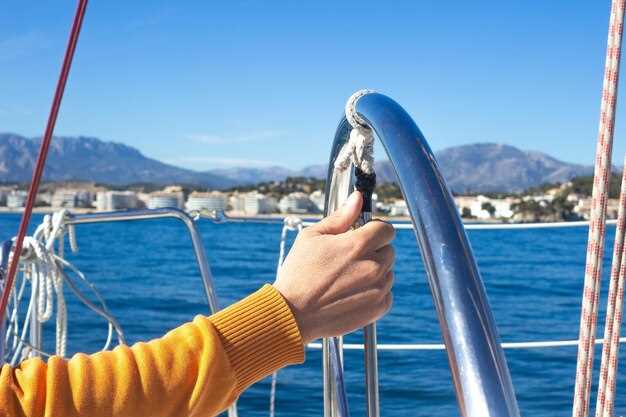
Book ahead for marinas, especially on sunday arrivals. This article provides practical steps to plan a comfortable voyage along Galician coasts, covering permissions, docking windows, and strategies to keep sailors on deck longer while minimizing delays.
Marinas overview situated along Vigo, Sanxenxo, La Coruña, and nearby border ports offer limited slips; if interested, act quickly by booking through a local operator. Choose comfortable quays with access to water, power, and washrooms near deck level to minimize stairs during long hops aboard a ship.
Group options work best when friends or siblings join a company with a seasoned skipper. A smart plan yields return on time, safety, and learning, while permits and pre-boarding checks stay in order. If interested in a private schedule, consider a short-term charter to reduce crowding and keep cabin comfortable.
Border notes think about trips near Portugal border; require proper permits and quick check on crossing rules at anchorages. Sailors should carry ship papers, captain license, and crew lists; in some ports, booking offices will ask for permits to anchor in nature reserves; check with local marina staff to align with border rules.
Historic vibe surrounds coastal towns with white houses; towns like Combarro or Baiona have historic cores; tavernas along promenades are vibrant after sunset. Keep an eye on weather and currents around anchorages, especially near estuary mouths.
Practical steps start with booking status weeks ahead, then confirm permits and return window with marina staff. For a multi-day leg, target historic towns with white houses; enjoy a sunday shore walk to stretch legs. This plan keeps deck time comfortable and avoids crowded slots; a small company of friends or siblings helps manage chores and ship checks; also keep a reserve day, también.
Plotting Your Route Through Rías Baixas: Distances, Tidal Windows, and Must-Stop Anchors
Begin in Vigo at first light, ride a flood toward Baiona, set first leg at roughly 25 nm and aim to arrive during slack water to ease entrance into coastal currents. Plan daily legs around 4–5 hours at 6 knots, with extra time for foul weather or unplanned stops. Booking ahead at western marinas helps avoid crowds; friendly staff can assist with language needs, especially during rainy or windy spells.
Key legs and distances
| Leg | From → To | Distance (nm) | Time @ 6 kn (h) | Tidal window |
|---|---|---|---|---|
| 1 | Vigo → Baiona | 25 | 4.0–4.5 | Slack 1–2 h around HW/LW; flood preferred |
| 2 | Baiona → Cangas de Morrazo | 14 | 2.3 | HW+1 to HW+3 h or LW+1 to LW+3 h |
| 3 | Cangas → Islas Cíes (Monteagudo area) | 18 | 3.0 | Slack around HW |
| 4 | Islas Cíes → O Grove (Ría de Arousa) | 28 | 4.5–5.0 | Flood with local current; avoid strong ebb |
| 5 | O Grove → Vilagarcía de Arousa | 12 | 2.0 | Slack water morning best |
| 6 | Vilagarcía → Portonovo/Sanxenxo | 16 | 2.5 | HW window preferred |
Slack water is usually 1–2 hours around HW or LW at each entry; plan passes to minimize current. In these waters, western winds can shift currents quickly; adjust pacing daily. Nav routes pass through several must-stop anchors: sheltered spots near Patos beach in Vigo area, Bueu in Pontevedra estuary, Carril near O Grove, and Sanxenxo uplink near A Lanzada; all offer sandy bottoms and 4–10 m depths with good protection from southerly or westerly swells. Bring precise charts, a reliable handheld VHF, and backup material for navigation; booking confirmations and local language phrases reduce friction for non-Spanish crews. For exploring iberian coasts, consider yate-ready marinas that offer unmanned moorings during shoulder seasons while staff provide support in English and Spanish. Weather can flip quickly; carry rain gear and extra foul-weather items to stay comfortable when crowds fill vibrant cities during peak season. This route delivers rich scenery, culture, and a world-class cruising experience.
- Anchor options: Patos beach area (Vigo estuary) with sandy bottom, 5–8 m depth.
- Bueu (Pontevedra estuary) – protected calm spots, 6–12 m depth.
- Carril (O Grove vicinity) – sand/weed mix, 6–9 m depth.
- Sanxenxo coast near A Lanzada – sandy holds, 4–8 m depth.
These segments suit coastal exploration with western weather patterns, friendly staff support, and a rhythm that welcomes both large groups and solo crews. Rich in culture and language variety, Spanish cities along this arc offer remarkable value for a world-class yate voyage.
Mooring Options: Choosing Marinas and Quiet Anchorage in Vigo, Sanxenxo, and Arousa
Reserve berths in Vigo Marina several days ahead of Sunday arrivals to guarantee space and reasonable rates. Passages along this coast trend calm in mornings, weather shifts later; keep backups in nearby coves.
Vigo offers city port with modern facilities, professional staff, and quick links to shops and recreation. You’re within easy reach of water, power, showers, and maintenance crews. A fully equipped quay with limited noise suits captains seeking a relaxed stop, while a nearby wild anchorage adds a touch of adventure if weather stays calm.
Vigo mooring options: marinas and quiet anchorages
Marina de Vigo provides sheltered slips, secure access, and support from harbour staff. Reservations are advised during peak season and Sunday passages when many captains arrive from southbound routes. For extra peace, consider outer piers or small coves along Dique area; mornings offer swimming, and breakfast aboard becomes routine. Navigation charts and weather forecasts help decide where to set anchor; patrón tips: maintain watch and communicate with harbour master. If delays occur, incurred charges can be avoided by selecting sheltered pockets and timely check-ins.
Sanxenxo and Arousa: Quiet anchorages and marina options

Sanxenxo hosts Marina de Sanxenxo with sheltered approach and easy access to Silgar bay promenade, shops, and dining. Reservations are highly recommended during weekend passages and Sunday arrivals. In Arousa area, Vilagarcía de Arousa’s marina offers reliable protection, showers, and repair services; alternative quiet anchorages lie along eastern coves, where water depth and seabed charts determine safe holding. Always review charts before starting passages, and adjust to currents and wind. Weather patterns here lean mild in summer, with westerlies building late in day, ideal for exploring coastal villages. A relaxed morning routine includes coffee and breakfast aboard before strolling ashore.
Tides, Currents, and Weather Windows for Safe Passages Along the Coast

Plan passages around slack-water windows near high tide and check tide tables plus forecast winds 24–36 hours ahead; to reduce risk, recommend aligning actions with patrón and crew; this approach helps you think clearly and set up a recreation that suits beginners and seasoned sailors alike.
Currents in beautiful Galician estuaries can reach 2–3.5 knots during flood or ebb on spring tides; entrances near narrow channels can bring less calm conditions; neap tides bring currents closer to 1–2 knots.
Weather windows favor light northerly to northeasterly flows, with winds 5–15 knots; plan to avoid open-water crossings when storm systems approach; rely on forecasts from port authorities and guided services.
season matters: best cruising runs from late spring into early autumn, offering more stable seas; saturday departures from galician harbors can pair with guided grand tour; this coast serves beautiful landscapes that invite discovery and a coastal park area to explore.
Boats of various sizes can ride in bays, plan to keep recreation time safe; if you need to anchor, choose sheltered mooring fields and safe approaches; memorable paths reveal great landscapes.
Cities such as santiago and bilbao provide provisioning hubs; there, guided operators offer a fully supported tour across coastal areas that reveal cultures and more; Please consider safety.
Thanks; there is no absolute guarantee in dynamic seas, yet following these steps improves safety; please think yourself more prepared and you will discover calm passages.
Provisioning, Fueling, and Local Services: Where to Refuel, Restock, and Dine
Reserve diesel at Club náutico Cambados dock and restock at Mercados de Cambados to cover a two- to three-day span. Buy fresh bread, seafood, tomatoes, and frutas; with local wine you can make dinner aboard.
Most marinas along this coast provide MGO and diesel at dockside counters; expect limited hours on Sundays and busy mornings. Best practice is to carry a spare card. Bring a payment card and a spare power bank for onboard devices.
Historic streets situated around the port reveal a vibrant culture; stroll modern lanes where cada corner links to local producers. Recommend peregrina adventures along the coast, adding a travel dining dimension.
Park and boardwalk areas give quick access to service points; club staff and locals are helpful. Limited laundries, repair shops, and waste disposal sit within a short walk; less walkers early morning make visits calmer.
Best practices in provisioning include a cada market visit early morning to avoid crowds; landscapes along the coast shift with light, soleil painting cliffs. A modern approach uses links to maps and local guides to plan each stop.
Personally, travel with a compact provisioning list; Cambados offers options that suit peregrina adventures and a relaxed pace. Dinner options near the port mix seafood and regional dishes. Onboard boards stay clean and safe; sailors mingle with locals at a small club by the park, soaking culture and sharing tips.
Practical Safety, Regulations, and Onboard Checks Before Entering Rías Baixas
Register with Capitanía Marítima and file voyage plan at least 24 hours prior to entry; present vessel registration, crew licenses, and insurance details; confirm AIS and VHF are operational; keep copies onboard and at home port.
Regulatory prerequisites
- Documentation: vessel registration number; capitán’s license; crew list; vessel insurance details; radio authorization; keep copies onboard.
- Safety gear: life jackets for every person aboard; lifebuoys; throwable devices; life raft if capacity large; fire extinguishers; day and night flares; first aid kit; medical information; VHF with Channel 16; EPIRB/PLB when required.
- Compliance on environment and behavior: waste management plan; restrictions near protected spots; no discharges; obey speed limits near crowds; monitoring of currents near estuary mouths.
- Navigation and communications: AIS active; GPS checked; radar if present; maintain watch on Channel 16; logbook updated; skippers with capitán coordinate decisions.
- Local procedures: report to Capitanía Marítima cuanto antes; submit navigation plan when required; during season, plan around huge crowds and large tourism flows; cambados and albariño routes attract crowds; sebastián region also sees influx.
Onboard readiness and checks
- Deck gear and mooring: inspect fenders, lines, anchor, chain; ensure mooring points secure; verify anchor retrieval gear works.
- Engine and systems: fuel level; oil; coolant; bilge pumps; battery charge; spare parts; water supply; air filters; check for leaks.
- Safety equipment: life jackets; lifebuoys; fire extinguishers serviced; flares non-expired; first aid kit; EPIRB; VHF tested.
- Navigation and communications: AIS active; GPS functional; radar if present; VHF on Channel 16; logbook current; charts updated; entry plan ready.
- Provisions and hygiene: water supply adequate; food stocks; waste management plan; sanitation on board; keep potable water and chemical cleaners separate.
- Emergency procedures: MOB drill; muster point; crew roles; rescue signals; watch rotation established; life raft ready if carried.
albariño tastings after checks offer wonderful evenings; crowds along spots near estuary routes grow during season; visiting cambados and sebastián areas becomes huge experiences in tourism and recreation; most travelers appreciate these checks; thanks to comprehensive preparations, captains and skippers enjoy luxury recreation above all on days and evenings.

